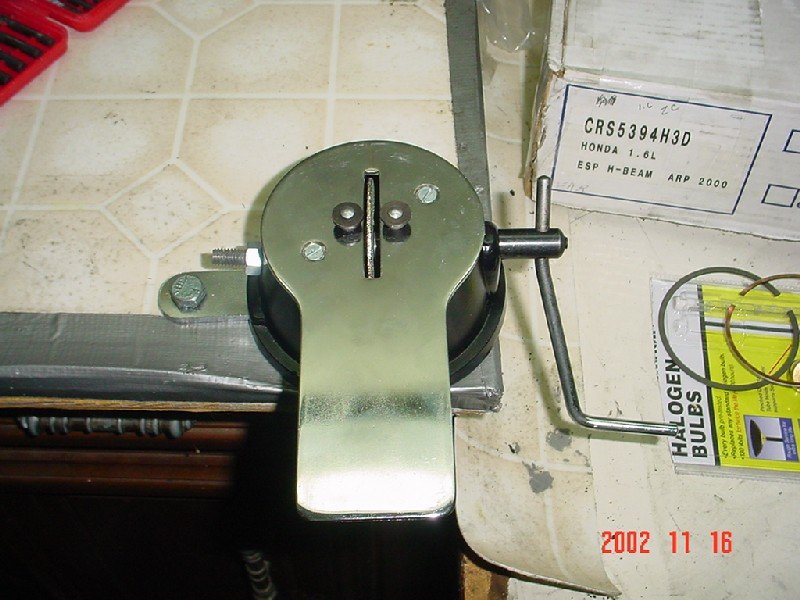Piston Ring End Gap
When installing new pistons, new rings are installed, too. When the ring
is inside the cylinder, the ring's end gap must be set. If the gap is too
small, the ring will have no room to expand when it gets hot. As a result,
it can distort and buckle. If the ring gap is too large, the ring will not
effectively control the combustion chamber's blow-by gasses.
The ring end gap for my bore/piston combo is .011" per Endyn (where I got
the pistons and rings). The following pictures illustrate how the ring
gap was measured and set.
The tool seen here is a piston ring filer (Summit Part No: 906795, cost=$32). It allows you to accurately
file the ring. Some people do this process by hand, using a file and a
vice. However, for greatest accuracy the ring filer is a great buy. The
grinding wheel evenly grinds material away from both sides of the ring.

Since our last installment, the block has been to the machine shop where I had
it decked .020".

When installing the ring, I used one of the old pistons to evenly apply pressure
and push it about 1.5 inches down the bore.

As you can see here, there is almost NO ring gap (this is the lower compression ring) when you get the rings new. The gap is in the 3 o'clock position and my .0015" feeler barely fit. These rings definitely need to be filed!

Here is the upper compression ring after a visit to the ring filer. The upper compression ring is not as thick as the lower compression ring, but the material was quite a bit tougher to file.

Here is a quick glance at the oil control rings.

When filing the rings, the edges must be deburred so that they do not snag
inside the piston.

The piston-to-deck clearance has been checked, the ring gap has been checked, so in the next installment, the whole bottom end of the engine will be assembled. Stay tuned...
Back to main






